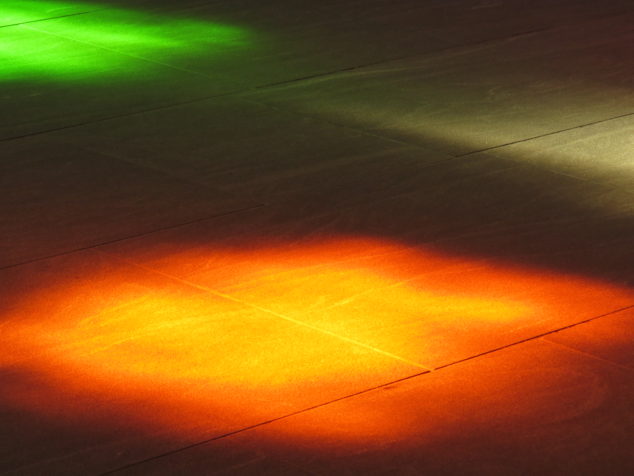The true work of art is but a shadow of the divine perfection. –Michelangelo
From Kansas City we flew to Austin, Texas, home to our first-born and her husband. It had been three years since we were there for their wedding, and we were all excited to do more exploring of this city and landscape that had captured their hearts. One bright, sunny morning we drove to the University of Texas campus where the Blanton Museum of Art stands in grand Texas style. Our destination was the recently completed standing work of art and architecture by Ellsworth Kelly, appropriately entitled ‘Austin.’ The artist gifted the design concept to the Blanton in 2015 before his death, and it was completed in 2018. Kelly was enamored by the architecture of cathedrals in Paris when stationed there in World War II. The structure is shaped like a cross, igloo-like with curved roof lines and brilliant white exterior.
The south, east, and west sides of the building are adorned with colored glass windows—the ‘color grid’ at the entrance, ‘tumbling squares’ on the east face…
…and ‘starburst’ on the west.
The shining white exterior is covered in 1,569 limestone panels from Alicante, Spain—each block a story and work of art in and of itself.
The entrance door is made from native Texas Live Oak, repurposed from some other life. I like how the metal handle is burnished from expectant hands reaching for entry.
Once inside, I was shocked by how empty it was, though I don’t really know what I was expecting. Straight ahead was the fourth, north-facing arm of the cross, and nestled in the curve of that arm rose a totem made of Redwood logged in the nineteenth century and reclaimed from the bottom of a riverbed. New life and rich patina from a century-old, forgotten log of a beautiful Redwood tree!
The colored glass windows were made from handblown glass by Franz Mayer of Munich. The ‘color grid’ was a theme used by Ellsworth Kelly in much of his other art…
…as was the spectrum of colors used in the east and west windows, reminiscent of refracted light through a glass prism or millions of drops of water that creates a rainbow. The outside light directed the colors onto the interior ceiling and walls…
…and even reached over to its opposite window to reflect yellow on purple, blue on red, and pink on blue.
The ‘starburst’ was my favorite, here along with two of my favorite people.
The real partnership of art between Kelly and Nature morphed into being when the sun shone directly through the ‘color grid’ windows onto the walls, onto the floor, and onto the black and white relief panels that line the walls. The panels are made from marble—the white marble sourced from Carrara, Italy where Michelangelo chose his stone and the black from a quarry in Belgium. Kelly, a life-long atheist, conceived the fourteen panels as abstract versions of the Catholic Stations of the Cross.
The black and white non-colors represent something basic and elemental and often oppositional, such as light and dark or good and evil.
The floor of ‘Austin’ is black granite from the state of Georgia. The sun-shining colors illuminate the dark stone with a rich, almost neon effect. Whatever the time of day, the art, the picture of color on granite or marble, changes, morphs, and becomes new again.
Artists and Nature have been partnering for eons—from cave dwellers with pigments made from minerals, charcoal, and limestone mixed with spit or animal fats to Native people with dyes made from barks, leaves, and flowers to Michelangelo with his huge blocks of marble. (“I saw the angel in the marble and carved until I set him free.”) Nature has been the inspiration, the means, or the medium for practically every artist. Ellsworth Kelly’s ‘Austin’ displays the rocks, wood, and rainbow colors in a simple, naturally elegant, and compelling way. He envisioned his work of art as a site for joy and contemplation—the same qualities that Nature or a chapel offers to all of us. What happens to us when we immerse ourselves in art of some form or in Nature? What parts of ourselves do we consciously disown yet display in full sight through our art? I think art offers us a reflection of the rich patina of our lives, complete with the building blocks that have pieced us together—each a story and work of art, in and of itself. Each one of us is a refracted ray of light from divine perfection that shatters into some unique color, and together we partner to create a true work of art.














Oh my! I love the sunlight coming in through the colored glass!
Isn’t it wonderful?! Makes me want to see it at different times of the day to see the patterns from the east and west windows!
I feel like I’ve been to BMA at 7:25AM this morning. Thank you for being the guide.
Wonderful! A good thing on a gray morning!
This post offers clear idea designed for the new viewers of blogging,
that in fact how to do blogging and site-building.